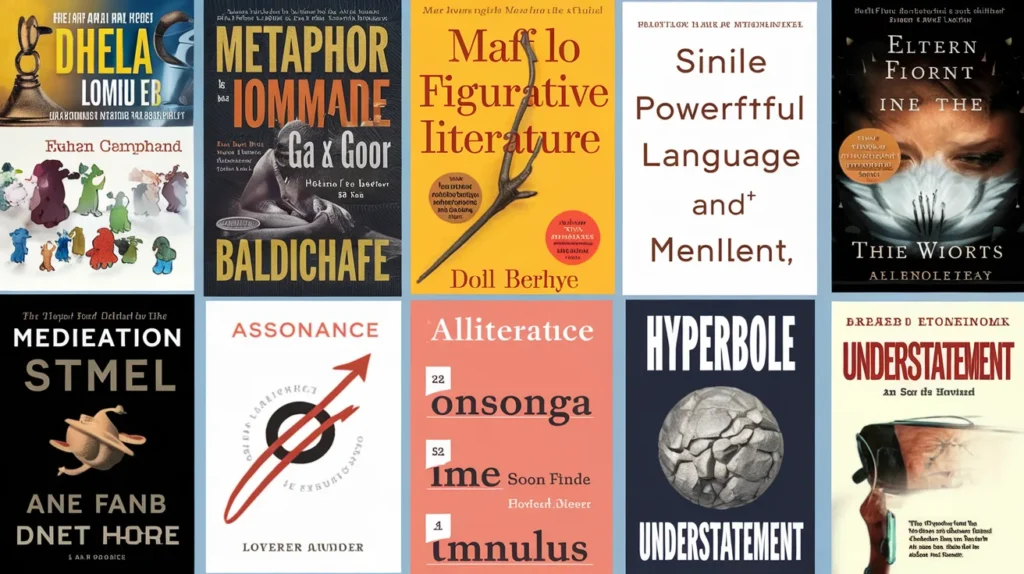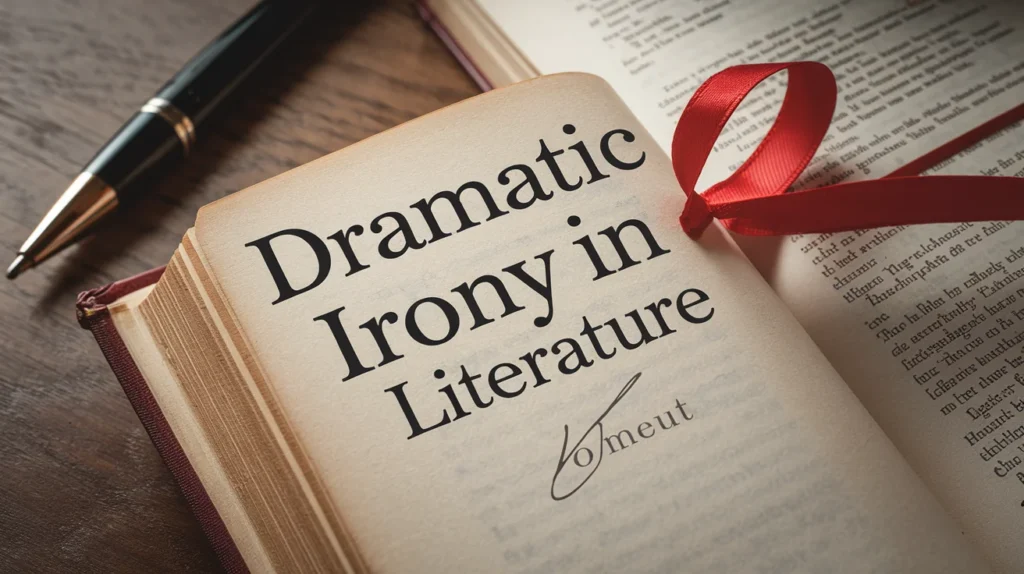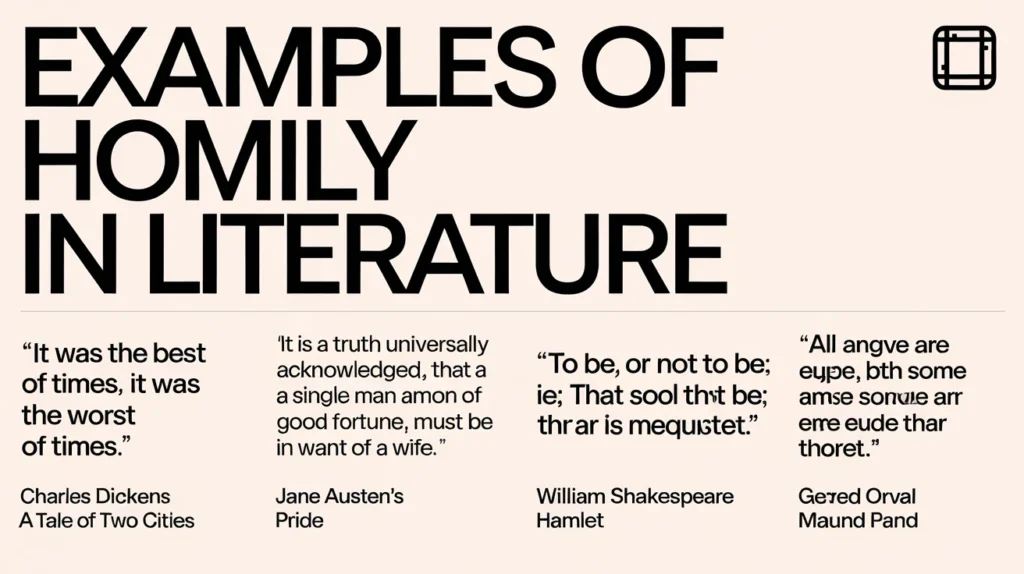Figurative language is the lifeblood of literature. It transforms ordinary words into vivid imagery, evokes emotions, and adds layers of meaning to stories. Whether you’re a literature enthusiast, a student, or a writer, understanding figurative language can deepen your appreciation of literary works. In this comprehensive guide, we’ll explore 9 examples of figurative language in literature, analyze their significance, and see how they elevate storytelling.
What is Figurative Language?
Figurative language refers to the use of words or expressions that go beyond their literal meaning to create a more impactful or imaginative effect. Unlike literal language, which states facts directly, figurative language uses devices like metaphors, similes, and personification to convey ideas in a more engaging way.
For example, saying “The world is a stage” (a metaphor) is more evocative than saying “Life is full of roles and performances.” Figurative language helps writers paint pictures in the reader’s mind, making their work more memorable and emotionally resonant.
Why is Figurative Language Important in Literature?
- Enhances Imagery: Figurative language creates vivid mental pictures, helping readers visualize scenes and characters.
- Evokes Emotions: It taps into the reader’s feelings, making the narrative more relatable and impactful.
- Adds Depth: It allows writers to explore complex themes and ideas in a nuanced way.
- Makes Writing Memorable: Phrases like “All the world’s a stage” stick with readers long after they’ve finished reading.
Now, let’s dive into the 9 types of figurative language and their examples in literature.
Metaphor
A metaphor is a direct comparison between two unrelated things, suggesting they are alike in a significant way. It’s a powerful tool for conveying abstract ideas in a concrete manner.
Example: The Great Gatsby by F. Scott Fitzgerald
One of the most famous metaphors in literature comes from The Great Gatsby:
“So we beat on, boats against the current, borne back ceaselessly into the past.”
Here, F. Scott Fitzgerald compares life to a boat struggling against the current, symbolizing the human struggle to move forward while being pulled back by past mistakes and regrets. This metaphor encapsulates the novel’s themes of ambition, failure, and the elusive nature of the American Dream.
Why It Works:
- It’s concise yet profound.
- It resonates with readers on an emotional level.
- It ties into the novel’s broader themes.
Symbolism
Symbolism uses objects, characters, or events to represent larger ideas or concepts. It adds layers of meaning to a story, encouraging readers to look beyond the surface.
Example: The Road by Cormac McCarthy
In The Road, the road itself is a powerful symbol. It represents hope, survival, and the journey toward an uncertain future. The father and son’s trek along the road mirrors humanity’s struggle to persevere in the face of despair.
Why It Works:
- It transforms a simple object into a profound metaphor.
- It reinforces the novel’s themes of resilience and hope.
- It invites readers to interpret the story on multiple levels.
Oxymoron
An oxymoron combines contradictory terms to create a paradoxical effect. It’s often used to highlight contrasts or convey complex emotions.
Example: Romeo and Juliet by William Shakespeare
In Romeo and Juliet, Juliet says:
“Parting is such sweet sorrow.”
This oxymoron captures the bittersweet nature of saying goodbye—sweet because of the love shared, sorrowful because of the impending separation.
Why It Works:
- It encapsulates conflicting emotions in a single phrase.
- It adds depth to Juliet’s character.
- It enhances the play’s exploration of love and loss.
Onomatopoeia
Onomatopoeia refers to words that imitate the sounds they describe. It’s a fun and effective way to bring scenes to life.
Example: The Bells by Edgar Allan Poe
In The Bells, Poe uses onomatopoeia to mimic the sounds of different types of bells:
“How they tinkle, tinkle, tinkle, in the icy air of night!”
The word “tinkle” replicates the light, high-pitched sound of small bells, creating an auditory experience for the reader.
Why It Works:
- It immerses readers in the scene.
- It adds a musical quality to the poem.
- It enhances the mood and tone.
Metonymy
Metonymy replaces the name of something with a closely associated term. It’s a subtle way to add depth and context to writing.
Example: Moby-Dick by Herman Melville
In Moby-Dick, the phrase “All hands on deck” uses “hands” to refer to the sailors. This metonymy emphasizes the collective effort required in a crisis.
Why It Works:
- It simplifies complex ideas.
- It adds a layer of realism to the narrative.
- It reflects the nautical setting of the novel.
Personification
Personification gives human characteristics to non-human entities. It’s a great way to make descriptions more relatable and vivid.
Example: The Old Man and the Sea by Ernest Hemingway
In The Old Man and the Sea, Hemingway personifies the sea:
“The sea is a friend.”
By describing the sea as a friend, Hemingway highlights the old man’s deep connection to nature and his respect for the ocean.
Why It Works:
- It humanizes the sea, making it a character in its own right.
- It reflects the protagonist’s worldview.
- It adds emotional depth to the story.
Hyperbole
Hyperbole is an exaggerated statement used for emphasis or effect. It’s often used to convey strong emotions or create humor.
Example: A Tale of Two Cities by Charles Dickens
The opening lines of A Tale of Two Cities are a classic example of hyperbole:
“It was the best of times, it was the worst of times.”
This exaggeration underscores the extreme contrasts and contradictions of the era.
Why It Works:
- It grabs the reader’s attention.
- It sets the tone for the novel.
- It highlights the duality of human experience.
Simile
A simile compares two things using “like” or “as.” It’s a straightforward yet effective way to create vivid imagery.
Example: To Kill a Mockingbird by Harper Lee
In To Kill a Mockingbird, Scout describes her teacher:
“She looked and smelled like a peppermint drop.”
This simile paints a clear picture of the teacher’s appearance and demeanor.
Why It Works:
- It’s simple and relatable.
- It adds a touch of humor.
- It helps readers visualize the character.
Alliteration
Alliteration is the repetition of initial consonant sounds in closely connected words. It’s often used to create rhythm and mood.
Example: Beowulf
In the Old English epic Beowulf, alliteration is used extensively:
“So mankind’s enemy continued his crimes.”
The repetition of the “m” and “c” sounds adds a musical quality to the text.
Why It Works:
- It enhances the poem’s rhythm.
- It creates a sense of cohesion.
- It adds to the epic’s oral tradition.
Conclusion
Figurative language is a cornerstone of great literature. From metaphors to alliteration, these devices enrich storytelling by adding depth, emotion, and creativity. By understanding and appreciating figurative language, readers can unlock new layers of meaning in their favorite works.
So, the next time you pick up a book, pay attention to the figurative language used. You might just discover a whole new world of literary artistry!


